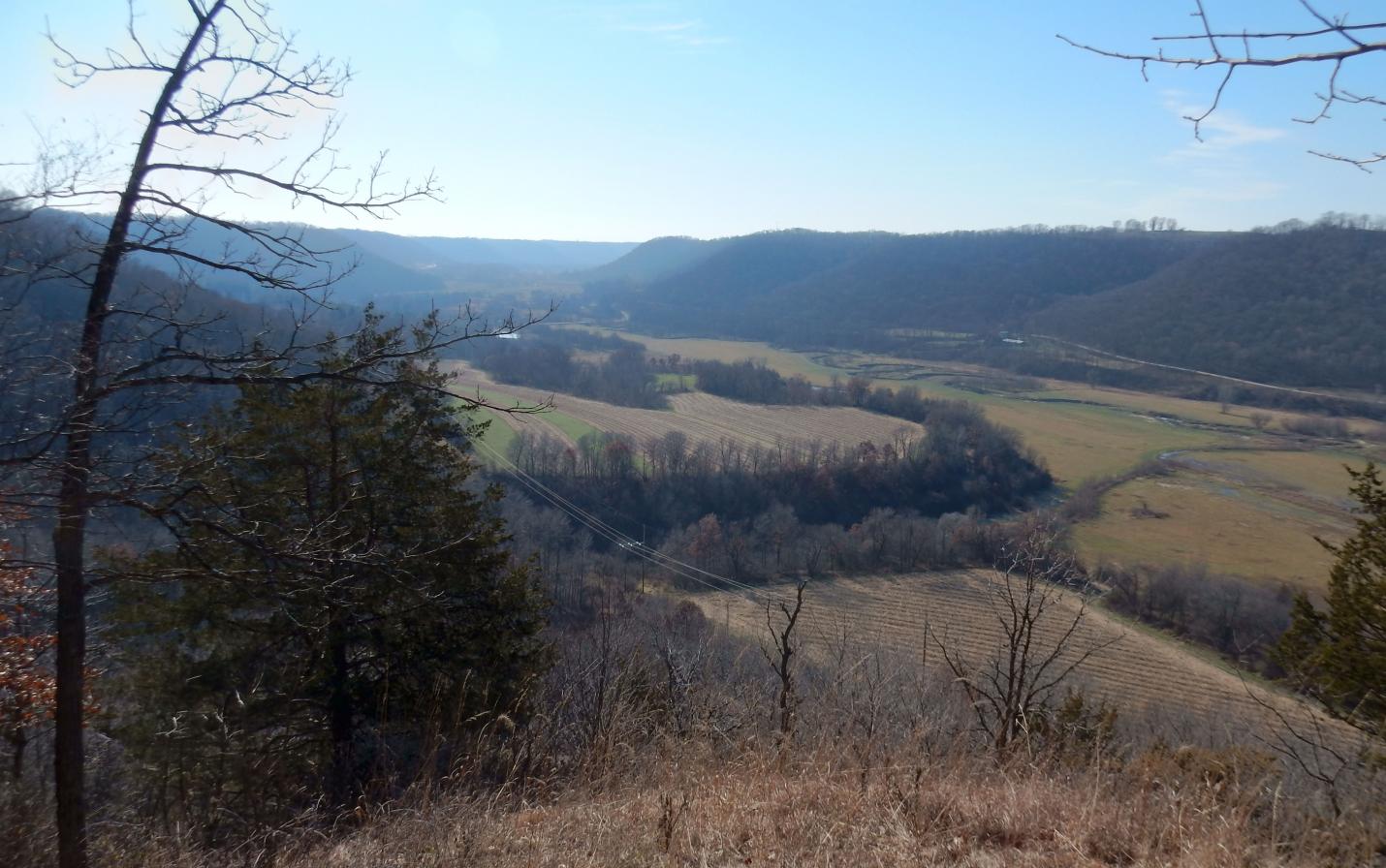
ROMANCE, WI – A conservation agreement between local landowners and land trust Mississippi Valley Conservancy will protect 170 acres of scenic wooded bluffs and native prairie overlooking the Bad Axe River Valley. The landowners, who chose to remain anonymous for this story, are comforted in knowing that the land, with its diverse forested habitat, will continue to protect wildlife and downstream communities as it has for centuries and that future residents and visitors to the valley may experience the same beauty its current owners enjoy.
The 170-acre property is located in western Vernon County, in an area that was heavily impacted by flooding only a few months past. Perennial cover and native vegetation is imperative to provide flood protection to downstream communities. The land has incredible diversity in trees, brush, grasses and wildflowers and this vegetation functions to slow and absorb runoff in heavy rain events. The steep wooded hillsides on the property play a role during heavy rain events; a role felt all the way to the Gulf of Mexico.
The Conservancy works locally to conserve natural resources and has protected over 20,000 acres in the area; over 16,000 acres of that is through conservation agreements with private landowners. Each acre protected contributes to the resilience of the overall watershed during critical floods by slowing and absorbing water. According to the USGS Water Science School, one inch of rain falling on 1 acre of ground produces about 27,154 gallons of water. On pavement or bare ground, that water increases in velocity as it travels through the watershed, causing damage and destruction. “On habitat, such as this property, that water is slowed, filtered and absorbed,” said Abbie Church, conservation director at the Conservancy, “and the conservation agreement with the landowner guarantees these sensitive areas will not be converted to land uses that cannot effectively deal with runoff and floodwaters. The permanent protection of contiguous corridors of habitat and open space is one of the best protections against catastrophic flooding and reducing the destructive impact of future flood events.”
In addition to its role in water management, the undisturbed land and water of the Bad Axe watershed supports an abundance of area wildlife. Because of its diverse natural communities and the protection it offers, the watershed is one of Mississippi Valley Conservancy’s priority areas, where it now protects over 1,400 acres of private land plus two public nature preserves where public use for hiking and hunting is welcomed. The two nature preserves include a 35-acre of nature preserve known as Romance Woods and a 70-acre nature preserve known as Eagle Eye State Natural Area.
The prairies on the property provide a diversity of native wildflowers, grasses, and sedges that provide crucial habitat for local bees, butterflies and other pollinators. The majority of the 170-acre property is comprised of oak and hickory forest; large enough to harbor forest-dependent birds such as the wood thrush, red-eyed vireo, scarlet tanager, and others. While not an everyday sight, bears and badgers have visited the property, and fox have denned in the sand caves.
“We’re seeing increasing interest from landowners in the Bad Axe watershed regarding land and water conservation,” said John Delaney, agroecologist at Valley Stewardship Network, “The land protection services offered by Mississippi Valley Conservancy are among the top tools we recommend to landowners for the conservation of wildlife and water quality.”
A conservation easement is a legal agreement that in this case, is between the landowner and local land trust Mississippi Valley Conservancy. The agreement permanently restricts certain uses of the land, such as residential subdivision or quarrying and is entirely voluntary. The landowner continues to own and use the land as they have in the past and the agreement does not allow public access; the land remains private and is a way for landowners to ensure that the wildlife habitat remains in place, for wildlife, in perpetuity. Depending on what the land can support, the agreement may include provisions regarding agricultural uses, timber harvesting, or an allowance for future buildings. This particular property includes the landowners’ personal residence and woodlands managed through the Wisconsin managed forest law program. The land remains on the local tax rolls.
“The landowners have provided through their conservation agreement an enduring legacy to future generations while achieving peace-of-mind, knowing that their land will be protected far into the future,” said Carol Abrahamzon, the Conservancy’s executive director.